Isekai: A Genre That Just Won’t Quit (And We’re Kinda Glad)
Isekai (異世界), meaning “a different world,” isn’t just about hopping to another dimension—it’s about diving headfirst into wish-fulfillment central, where anyone (yes, even you) can become a hero, a villain, or… a vending machine. Yeah, that’s right. The genre has come a long way from its humble beginnings in Japanese folklore, and today, it’s an unstoppable force in the anime world, taking us to places where rules are made to be broken and power-ups are just a plot twist away.
But where did this all start? Well, long before protagonists were reincarnating as swords or slimes, there were stories like the legend of Urashima Tarou, a classic Japanese folktale where a fisherman visits an underwater palace. It’s basically the OG isekai—just swap out the dragon palaces for dungeon crawls, and you’re pretty much there. This timeless appeal of “what if you could escape to a completely new reality?” has hooked audiences for centuries, and now, isekai’s got its grip on anime fans worldwide.
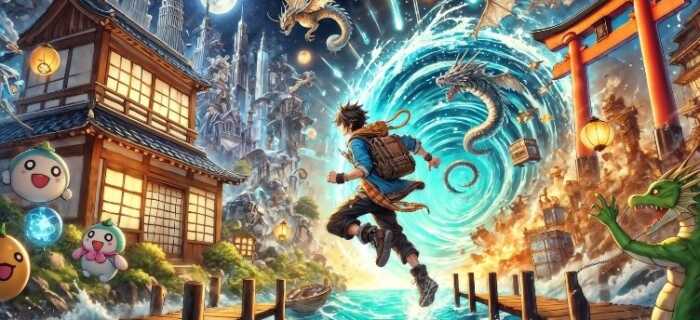
The Allure of Adventure and Escape in Isekai
This journey through time and space is at the heart of why isekai endures. It’s not just the fact that characters leave their ordinary lives behind—it’s the sense of adventure that lies ahead. These stories play with the idea that anything can happen when you’re freed from the constraints of your world. That’s why the genre has evolved to fit so many different settings, from medieval kingdoms to futuristic digital landscapes. There’s a certain magic in that unpredictability, where the audience never quite knows what the new world will bring. And each world has its own set of rules—whether it’s a realm full of magic or a virtual reality where every action has dire consequences.
Isekai taps into a universal desire to break free from the routine of daily life. In our world, you might be stuck in a mundane job or facing endless responsibilities, but in isekai, you’re granted a clean slate. This escapism is incredibly appealing, particularly in times of uncertainty. The ability to escape to another world where the possibilities are endless, and the protagonist has agency over their fate, is part of what gives the genre its staying power.
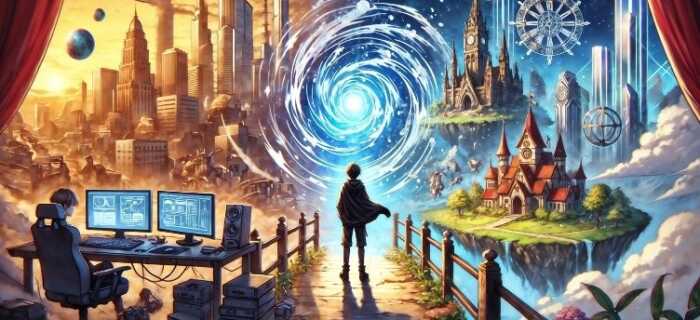
Why Say It Short? The Quirky, Plot-Spilling Titles of Isekai
And let’s not forget the titles. Isekai has a flair for the dramatic—especially when it comes to naming conventions. We’re not talking about simple, catchy titles anymore. Now it’s That Time I Got Reincarnated as a Slime or I’ve Been Killing Slimes for 300 Years and Maxed Out My Level. Why settle for a short, mysterious name when you can throw the entire plot into the title? But these titles pale in comparison to the newer wave of absurdly long ones, like Reborn to Master the Blade: From Hero-King to Extraordinary Squire or Endo and Kobayashi Live! The Latest on Tsundere Villainess Lieselotte. It’s like reading a full plot summary before you’ve even hit play.
These titles are so long, they’ve practically become a genre hallmark. Just when you thought it couldn’t get crazier, along comes Campfire Cooking in Another World with My Absurd Skill or The Reincarnation of the Strongest Exorcist in Another World—both titles that spill the beans about everything important. And who could forget the ultimate tongue-twister: I’m a High School Boy and a Successful Light Novel Author, But I’m Being Strangled by a Female Classmate Who’s a Voice Actress and Is Younger Than Me. Yes, that’s a real title. It’s like light novel writers took the concept of elevator pitches to a whole new level, turning titles into synopses because why not?
So, why all the long titles? Simple: it’s marketing. The light novel industry is so competitive that writers need to grab your attention immediately. With so many similar premises flooding the market, the titles have become a way to sell the concept in a single sentence. Think of it as a kind of clickbait for anime lovers. If the title makes you laugh or raises your eyebrows, it’s done its job. Even though fans often shorten these massive titles to acronyms—DanMachi, TenKen, KonoSuba—the full-length versions are still iconic. It’s part of what makes isekai such a distinctive and fun genre.
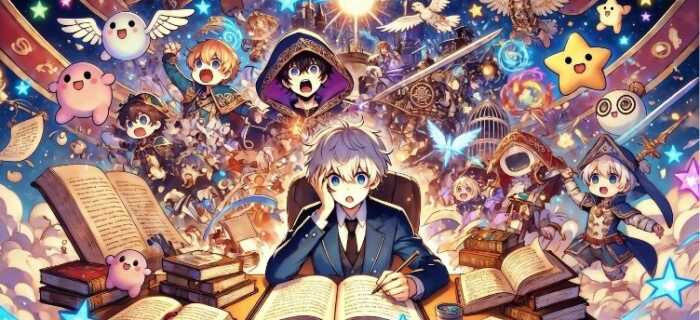
This trend towards long titles also highlights another facet of isekai’s adaptability. While the names themselves may feel over-the-top, they reflect the genre’s embrace of self-awareness and humor. There’s a kind of wink-and-nod to the audience that says, “We know this is ridiculous, but isn’t that the point?” Isekai is uniquely positioned to poke fun at itself while still delivering engaging narratives, balancing absurdity with real emotional stakes. And in a media landscape where standing out is everything, these titles help carve out a niche where isekai can be instantly recognizable.
From Virtual Fantasy to Otome Madness
The evolution of isekai into the pop culture powerhouse it is today began in the ‘90s with shows like Digimon and Fushigi Yuugi. These early isekai shows laid the groundwork for what the genre would become, transporting us to worlds where ordinary kids found themselves at the center of epic adventures. In Fushigi Yuugi, two teenage girls are sucked into the world of an ancient book, where every choice they make has life-or-death consequences. This combination of high-stakes drama and personal growth made for compelling storytelling that still resonates today.
Around the same time, Magic Knight Rayearth introduced us to three schoolgirls who are whisked away to save a mystical world. These early isekai stories were all about transformation—regular people suddenly thrust into fantastical worlds where they had to rise to the occasion and become heroes. In the case of Digimon, the protagonists formed deep bonds with digital creatures that could evolve into powerful warriors, reinforcing the theme of personal growth through partnership and adventure. It was a symbiotic relationship, where both the DigiDestined and their partners learned and grew from each other, showcasing the transformative power of friendship and courage.
Digimon is particularly significant in this history because, while it may not have been labeled “isekai” at the time, it had all the essential elements: a group of kids from the real world thrown into the Digital World, where they must navigate strange rules and fight to survive. The digital setting gave Digimon a futuristic twist that set it apart from the more fantasy-driven isekai of its time. The Digital World in Digimon was not just a backdrop; it was an interactive environment that constantly responded to the characters’ decisions. This element of adaptability, where the world itself could evolve alongside the protagonists, laid the foundation for the more complex virtual worlds that would become central to later isekai stories like Sword Art Online.
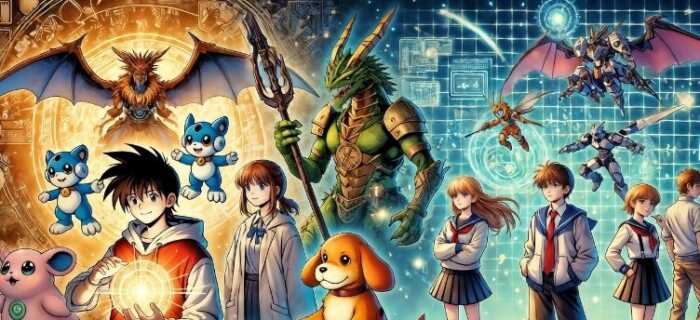
What made Digimon particularly interesting was how it merged personal stakes with digital battles. The DigiDestined weren’t just fighting monsters—they were confronting their fears, insecurities, and the responsibilities that come with growing up. Each “digivolution” symbolized the characters’ internal growth, a theme that resonated with young audiences on a deeper level. This concept of growth through adversity, both personal and external, is one that continues to define modern isekai.
By the time Sword Art Online hit the scene in 2012, the genre had become more sophisticated, exploring themes like survival, identity, and the blurred line between reality and virtual worlds. The digital landscape of Sword Art Online wasn’t just a backdrop; it was integral to the stakes of the story. If you die in the game, you die in real life. This added a layer of intensity that set the stage for future isekai to delve deeper into psychological and philosophical questions.

The success of Sword Art Online demonstrated that isekai could be more than just lighthearted escapism—it could also offer thought-provoking narratives that explore the complexities of living in a world not your own.
But as the genre evolved, it found new ways to captivate audiences, particularly through the rise of otome isekai. This subgenre puts a romantic twist on the classic isekai formula, often featuring female protagonists who are reincarnated into the world of their favorite otome games. These stories blend romance, strategy, and drama, as the protagonist must navigate complex social dynamics, avoid bad endings, and win the hearts of their desired love interests. Otome isekai has carved out a unique niche within the genre, appealing to fans of romance and visual novels, while still playing with the traditional isekai themes of reinvention and agency.
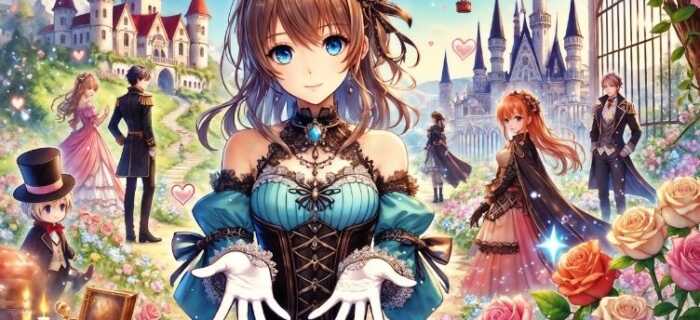
In many otome isekai, the protagonist starts as a side character or even a villainess, forced to change their fate by using their knowledge of the game’s plot to survive. Titles like My Next Life as a Villainess: All Routes Lead to Doom! subvert expectations, creating lighthearted but engaging narratives where the main character defies her destiny and builds new relationships in unexpected ways. This playful yet strategic take on isekai has proven popular, showcasing that the genre can continue to innovate by mixing in elements of romance, humor, and clever storytelling.
Why is Isekai So Addictive?
The appeal of isekai goes far beyond the surface-level thrill of watching characters gain powers and save kingdoms. At its core, isekai taps into something deeply human: the desire for a fresh start. In real life, we’re often stuck in routines, jobs, and responsibilities that don’t offer much room for reinvention. Isekai offers a world where all of that is stripped away, and the protagonist is given a blank slate. Whether they’re reincarnated as a slime or thrown into a virtual game, they have the opportunity to start over and become someone new.
This is why the genre is so addictive. It’s not just about the power fantasy, though that’s certainly part of it. It’s about the freedom that comes with stepping into a world where the rules don’t apply. The audience gets to live vicariously through the protagonist, imagining what they would do in a world where magic and adventure are just part of the daily grind. It’s the ultimate escape—an invitation to leave behind the stresses of the real world and dive into a place where anything is possible.
But isekai isn’t just about wish fulfillment. It’s also about the idea of growth and transformation. Many of these stories feature protagonists who were struggling in their original lives—whether they were socially awkward, dissatisfied, or even dead. In the new world, they get a chance to overcome those struggles, to face their fears and insecurities, and to become stronger versions of themselves. It’s an incredibly satisfying narrative arc, both for the characters and for the audience, who get to see someone like them rise to the occasion and become the hero of their own story.
Moreover, the wish-fulfillment aspect of isekai provides more than just entertainment—it offers a safe space for viewers to project their own desires and dreams. Who wouldn’t want to be whisked away from a mundane existence into a world where they could be a hero, possess magical powers, or even find the love of their life? It taps into the fundamental human desire for control and significance, where the protagonist’s actions have a direct and meaningful impact on the world around them.
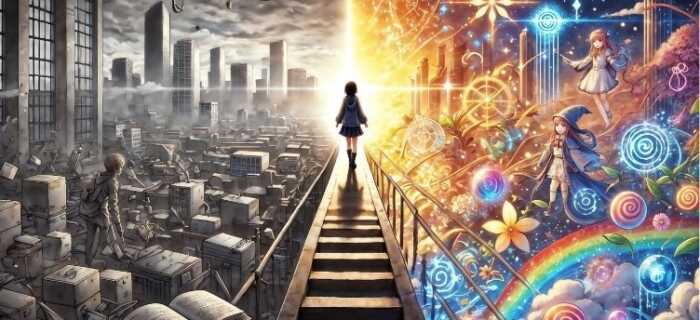
Isekai vs. Classic Fantasy: What Sets It Apart?
So, what exactly separates isekai from your regular old fantasy? After all, both genres whisk characters away to magical worlds filled with swords, sorcery, and dragons, right? Well, yes and no. The key difference lies in the protagonist’s origin and how they interact with the new world.
In traditional fantasy—think Lord of the Rings or Game of Thrones—the characters are usually from the fantasy world itself. They don’t question the magic or the dragons because that’s just how things roll where they live. The story is built around the rules and lore of that world, and the characters are fully immersed in it from the start.
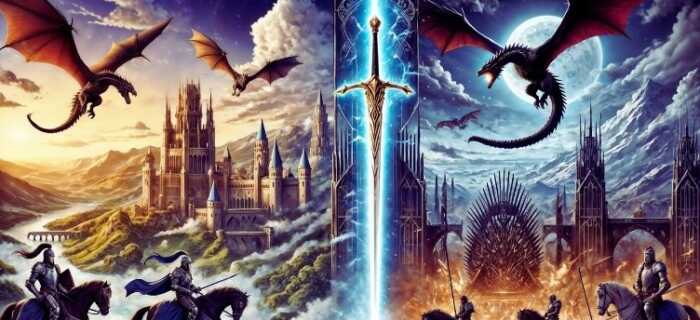
Isekai, on the other hand, is all about the contrast between worlds. The protagonist is usually an outsider, someone from our world, suddenly dropped into a universe that operates under completely different rules. Whether it’s magic, medieval politics, or RPG mechanics, the character has to navigate this foreign environment, often using their knowledge of the “real” world to their advantage. This outsider perspective is a major part of isekai’s appeal—it lets us, as viewers, project ourselves into the story. We get to experience the wonder and strangeness of the new world alongside the protagonist, and that’s something traditional fantasy doesn’t offer in quite the same way.
Plus, isekai loves to play with meta-humor and subvert expectations. A lot of modern isekai poke fun at genre tropes, particularly through the lens of video game mechanics (Sword Art Online and Overlord), while classic fantasy tends to take itself more seriously. The shift towards humor, self-awareness, and the constant contrast between the mundane and the magical is what really makes isekai stand out from its fantasy predecessors.
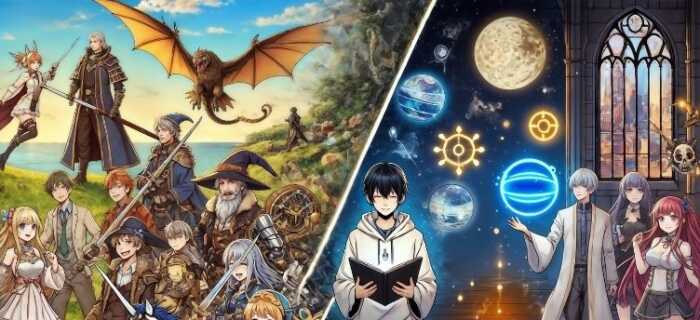
Another key element that differentiates isekai is the protagonist’s sense of agency. In traditional fantasy, the characters often have destinies or fates tied to their worlds. They are part of the fabric of their universe and must fulfill roles that are larger than themselves. In contrast, isekai protagonists are often free from these constraints. They enter new worlds with the potential to do whatever they want, shaping their fates as they go. It’s a liberating idea—especially when compared to the heavy weight of destiny often found in classic fantasy.
Why Does Isekai Keep Coming, Even With Saturation?
Despite all the talk of oversaturation, isekai keeps on rolling. Why? Because even though it feels like we’ve seen it all, the genre still has a huge reservoir of ideas. The core appeal of isekai—escaping to another world, gaining powers, starting fresh—never really gets old. It taps into something primal: the desire to leave behind the drudgery of everyday life and be someone. That’s a fantasy that resonates deeply, especially in stressful times.
Isekai offers a blank canvas where anything is possible, and that makes it endlessly flexible. Sure, the market might feel crowded, but that’s only because it’s so good at blending with other genres. There’s isekai for gamers, romantics, slice-of-life fans, comedy lovers—no matter your taste, there’s a niche for you. And as long as people dream of escaping to a place where the rules are different, isekai will continue to thrive.
But it’s not just about escapism; isekai is also a genre that constantly reinvents itself. Whether through wacky titles or mixing in new genre elements (otome isekai anyone?), it manages to keep the format fresh. For every tired trope, there’s a series that flips the script or adds a new twist. So, while we might groan at yet another reincarnation premise, we’re still clicking play to see just how far creators can push the genre.
In a way, the saturation actually fuels the innovation. Writers and animators know they need to bring something new to the table to stand out. So, while we might feel overwhelmed by the sheer number of isekai shows, we’re also getting some of the most creative spins on the genre that we’ve ever seen.
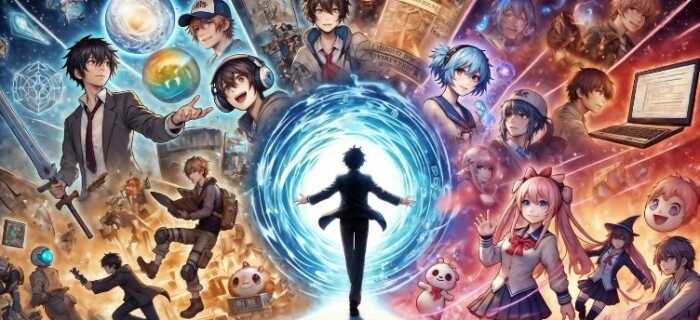
The isekai genre is like an ever-evolving ecosystem. For every Reincarnated as a Sword, there’s an Ascendance of a Bookworm, proving that isekai doesn’t have to follow a set formula. As long as the desire for escapism exists, isekai will find new ways to surprise and delight its audience. The genre has grown into a global phenomenon not just because it’s fun, but because it speaks to a deeper human desire: the yearning for a life beyond the one we know.
What do you think? Leave a comment.




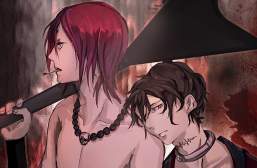
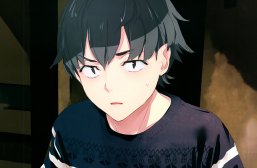
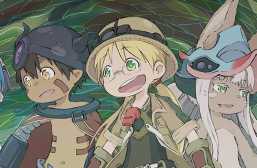
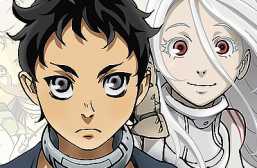
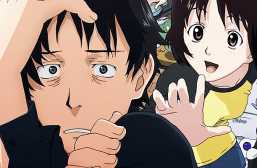
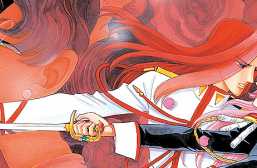
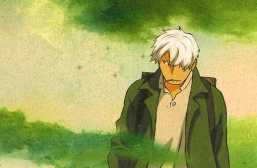
From a writer’s standpoint, isekai offers a practical advantage… it’s easier to write from the perspective of someone from your own world and era. Crafting a protagonist from a completely foreign setting requires immense effort, research, and empathy. This simplicity is one reason isekai remains so appealing.
Even stories like Alice in Wonderland and The Wizard of Oz can be seen as early examples of western isekai. 😀
I avoid gaming-style isekai but love Overlord for its worldbuilding. Favorites: Overlord, Re:Zero, Mushoku Tensei.
Monster Ranchers is the best isekai.
Isekai is a setting, not a genre! Like target demographics.
Not my favorite genre, but some stories like ReZero and Bookworm are great despite the oversaturation.
It’s cancer. One-fourth of the next season is isekai—tedious.
Still love it for escapism. Excited for female-led isekai like Otome Villainess and Bakarina’s comedy.
Isekai feels more like a setting than a genre. Bookworm drew me in for its slice-of-life kindness, unlike the usual power-revenge themes. I also enjoyed Seijo no Maryouku and Slime 300-nen for their lighter tone.
Agree 100%. Horror isekai could be amazing—like Inuyasha with more focus on horror. Imagine hell as a punishment isekai.
Hey, amazing job and a pleasure to edit, as usual! Thanks for taking this topic and presenting it in a way I personally would not have thought to do! Looking forward to your next article!
Don’t mind it. Overdone, sure, but I don’t watch enough to hate it.
Overdone and uninteresting now.
Good stories matter. Mushoku Tensei, Re:Zero, and Kono Suba are solid, but I also love Log Horizon and Youjo Senki.
Give me mooooooore!
Older isekai often focused on ‘returning home,’ but modern isekai rarely does, as it’s more about escaping miserable lives. Returning would ruin the point.
This really sucks imo. Even if life on Earth is awful, you’ve spent your whole life there. Surely there’s some permanent longing to return, especially for family and friends left behind. Modern isekai feels selfishly escapist.
Some isekai now offer a compromise: characters don’t want to return home but still find ways to contact loved ones—like leaving final words or reassurance.
Better to be selfish than selfless. You can make new loved ones, but you can’t make magic real on Earth.
The genre has always been about breaking free from reality, whether through portals or new dimensions.
At its core, isekai reflects the simple (and delightful) wish to be transported into a fantasy RPG (or anime, or sci-fi RPG, etc.).
Isekai is popular because it lets authors start characters from rock bottom and build up.
This genre has been big in Japanese isekai for years; webnovel authors in Japan wrote LITRPG PF isekai long before Western ones.
Isekai has always been popular. Narnia, for example. Its current surge is because it combined classic tropes with gaming and fully embraced wish fulfillment over storytelling.
In Japanese, sure, but in English, it’s portal fantasy. Isekai implies anime/light novel tropes.
Just like every genre. Most are bad, some are good.
ReZero and MT stand out for addressing past lives. I turn my brain off for the rest.
Love ReZero! MT is good but not my favorite. Both stand out for detailed mechanics over standard magic.
Love isekai for the interesting situations it creates.
Isekai felt overdone for a while, like battle shonen, but it’s calming down.
Amazing potential, but recycled ideas drag it down. Still biased toward it since my favorite anime is isekai.
I’ve only seen a few. Didn’t like Conception, but the rest were good.
The problem is RPG elements hijacking fantasy. It shortcuts worldbuilding.
Agree, it’s often a crutch. Sleepy Princess parodies it well, but most fail.
Miss when isekai focused on past lives and moving on. Now it’s trope heavy, but there’s still some good ones.
Love how it does worldbuilding by contrasting the character’s old and new worlds.
Older isekai focused more on past lives. You might like them.
A legit genre, but most recent ones are subpar.
Love Hajime, but anime adaptations miss the small details. Manga is where it’s at.
It’s increasing! This season already has 5+ new ones.
Not my favorite, but unique takes like Bookworm stand out in the oversaturated mix.
To your point about Isekai’s allure, escapist themes in general (at least in the United States and the West more broadly) have been popular for more than a decade.
As much as this sub-genre is growing in popularity, the content is no longer original
The first time i felt the allure of isekai narratives was when i saw ‘om shanti om’ (2006) for the first time. Golden time of bollywood really.
Good article. For honest, isekai setting is more like a background of the whole work right now. Different from the early years, main character need to escape the isekai and try to find way home (such as the season 1 of SAO, I think it’s the final goal of this season ), more and more isekai animations put more time and energy to write about how the characters been successful (a.k.a their teammates said that he/she are a totally loser and in a very short time he/she comes back as a very powerful hero/adventurer). Most of the new isekai animations want to let the audience “loose their mind” and feel the pure emotion.
That’s quite sad for me because I still want to see more isekai animations talking about flexible tactics such as Log Horizon or No Game No Life.
Great article, my understanding about Isekai was still on Narnia or Lord of rings and I have improved my knowledge about Isekai from this article.
Great article, felt my eyes bulging as I read all that text. Isekai is just insane, imo.
Can’t wait until the West starts dabbling in anime-level isekai.
Personally I think isekai is getting outdated